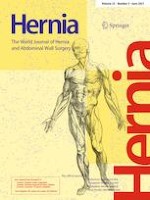Erschienen in:

23.03.2020 | Original Article
Educational value of surgical videos on transabdominal pre-peritoneal hernia repair (TAPP) on YouTube
verfasst von:
E. Reitano, M. Cavalli, N. de’Angelis, J. Loriau, G. Campanelli
Erschienen in:
Hernia
|
Ausgabe 3/2021
Einloggen, um Zugang zu erhalten
Abstract
Purpose
Transabdominal pre-peritoneal hernia repair (TAPP) is a worldwide performed surgery. Surgical videos about TAPP uploaded on the web, with YouTube being the most frequently used platform, may have an educational purpose, which, however, remains unexplored. This study aims to evaluate the 20 most viewed YouTube videos on TAPP through the examination of four experienced surgeons and assess their conformity to the guidelines on how to report laparoscopic surgery videos.
Methods
On April 1st 2019, we searched for the 20 most viewed videos on TAPP on YouTube. Selected videos were evaluated on their overall utility and quality according to the Global Operative Assessment of Laparoscopic Skills-Groin Hernia (GOALS-GH) and the Laparoscopic surgery Video Educational Guidelines (LAP-VEGaS).
Results
Image quality was poor for 13 videos (65%), good for 6 (30%) and in high definition for 1 (5%). Audio and written commentary were present in 55% of cases, while no video presented a detailed preoperative case description. Only 35% of the videos had a GOALS-GH score > 15, indicating good laparoscopic skills. Overall video conformity to the LAP-VEGaS guidelines was weak, with a median value of 12.5% (5.4–18.9%). Concordance between the examiners was acceptable for both the overall video quality (Cronbach’s Alpha 0.685) and utility (0.732).
Conclusions
The most viewed TAPP videos available on YouTube in 2019 are not conformed to the LAP-VEGaS guidelines. Their quality and utility as a surgical learning tool are questionable. It is of upmost importance to improve the overall quality of free-access surgical videos due to their potential educational value.